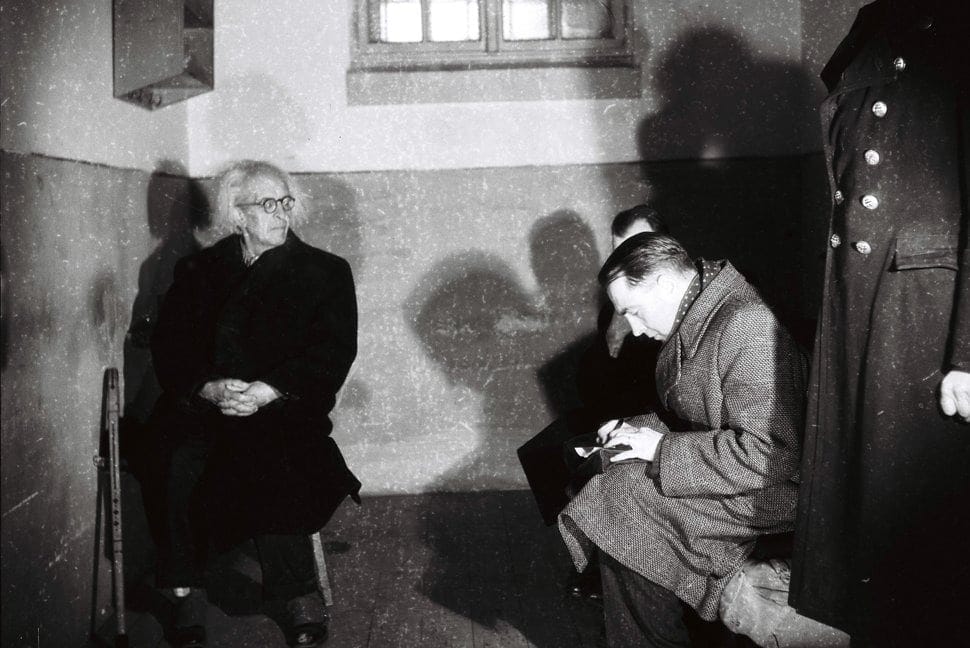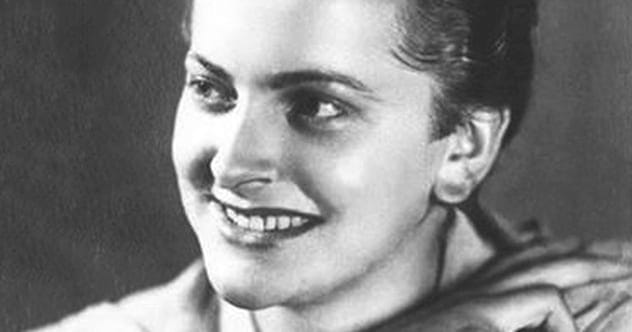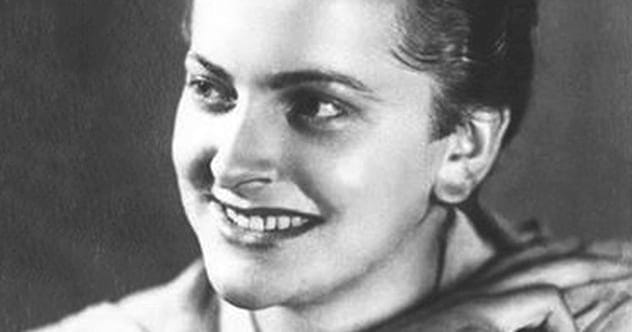The law of war, designed to regulate the conduct and conditions of warring parties, is often tragically ignored during times of intense conflict. Violations of these principles can range from intentionally killing prisoners or civilians to the horrors of rape and torture. This list delves into the grim details of key historical figures who committed such atrocities and were sentenced to death. While their names may not be widely known, their actions have left an indelible scar on history.
Vojtech Tuka

When Jozef Tiso rose to power as President of the First Slovak Republic in October 1939, he quickly appointed Vojtech Tuka as Prime Minister. Tuka, a lawyer, journalist, and fervent fascist, quickly established himself by implementing comprehensive anti-Semitic laws. His most appalling act was overseeing the mass deportation of Slovak Jews to concentration camps. As the years passed and the exterminations escalated, Tuka’s health deteriorated. Following a stroke late in the war, Tuka, confined to a wheelchair, fled to Austria, where he was soon arrested and deported back to Slovakia.
During his trial by the postwar Czechoslovakian government, Tuka suffered multiple strokes, resulting in partial paralysis. Despite his severe medical conditions, the fascist Nazi received no leniency, especially given his role in leading Slovakia into war against the Soviet Union. On August 20, 1946, the 66-year-old war criminal was wheeled to the gallows, a fitting end for a man who reveled in the suffering of others.
Taha Yassin Ramadan
In 2002, amid rising tensions between the United States and Iraq, Iraqi Vice President Taha Yassin Ramadan proposed an unusual solution. To avert war, he suggested a duel between President George W. Bush and Saddam Hussein, stating, “A president against a president and vice president against a vice president and a duel takes place. And in this way, we’re saving the American and Iraqi people. UN Secretary-General Kofi Annan should referee.” Unsurprisingly, Bush declined this offer.
Two years later, American forces captured Ramadan, and he was tried before the Iraqi High Tribunal (IHT) for crimes against humanity. He was initially sentenced to life in prison in November 2006, but the IHT prosecutor deemed the punishment insufficient. Consequently, the IHT Appellate Chamber ordered a re-sentencing, leading to his execution by hanging on March 20, 2007, marking the fourth anniversary of the invasion of Iraq.
William Joyce
William Joyce, known as “Lord Haw-Haw,” was a prominent broadcaster during World War II. Born in America, he was a fascist living in Germany in 1939. His talent for public speaking caught the attention of Joseph Goebbels, who recruited Joyce for his radio show to spread Nazi propaganda to Allied countries. By 1940, Joyce had six million regular listeners and eighteen million occasional listeners, all tuning in to broadcasts designed to incite distrust among the British public toward their government.
Goebbels was so impressed with Joyce’s popularity that he noted in his diary, “I tell the Führer about Lord Haw-Haw’s success, which is really astonishing.” By the spring of 1940, Joyce’s rhetoric grew more dire, threatening Britain with invasion and urging the country to surrender. His broadcasts ended in May 1945 when British forces captured him and brought him to England for trial. The court found him guilty of high treason for serving Nazi Germany during the war and sentenced him to death. On January 3, 1945, Joyce was hanged at Wandsworth Prison, becoming the last person executed for high treason in the United Kingdom.
Carmen Mory
Carmen Mory, nicknamed ‘The Devil,’ was a Swiss native who moved to Berlin in 1933. She quickly became close to propaganda minister Joseph Goebbels, leading to her recruitment as a Gestapo agent. In 1940, Mory was arrested in France after a failed murder attempt on a newspaper editor. Initially sentenced to death, she was released on the condition that she spy for the French. However, the Gestapo grew suspicious and arrested her for being a double agent.
She was sent to Ravensbrück Concentration Camp, where she became a Blockova, in charge of prisoners in her block. There, she reveled in her power, engaging in sadistic acts of torture and murder. From daily beatings to lethal injections, Mory’s favorite pastime was dousing prisoners in the “lunatic room” with buckets of freezing water. At the end of the war, she was released from Ravensbrück but was rearrested by Allied authorities after they learned of her atrocities in Block 10. Found guilty of torture and murder, Mory was sentenced to hang but took her own life with a razor on April 9, 1947, a week before her scheduled execution.
Julius Streicher
As one of the earliest members of the Nazi party, Julius Streicher was notorious for his fierce anti-Semitic rhetoric, which endeared him to Hitler. Their close association led Hitler to consider Streicher his protégé. By May 1945, Streicher found himself captured by American forces.
Following the Nuremberg trials in October 1946, Streicher was brought to a small prison gym where he met a gruesome end. When the trapdoor opened, Streicher plunged out of sight, but his neck failed to snap, leaving him “swinging violently and groaning in pain as he struggled for air” for several minutes. Many believed the shoddy execution was intentional by hangman Master Sgt. John C. Woods, who allegedly wanted to outshine Streicher’s flair for dramatics. Woods boasted to Time magazine about his efficiency in killing, stating, “I wasn’t nervous. A fellow can’t afford to have nerves in this business.”
Champ Ferguson
Confederate guerrilla leader Champ Ferguson, described as a “gambling, rowdyish, drinking, fighting, quarrelsome man,” roamed the Tennessee-Kentucky border, leaving a trail of bloodshed. Of the numerous victims Ferguson slaughtered, most were Union soldiers targeted for personal vendettas. Union men taken prisoner, whether soldiers or civilians, were often found shot or stabbed through the heart with Ferguson’s Bowie knife, sometimes even decapitated.
In 1864, Ferguson’s guerrilla band successfully fought off a Federal cavalry attack. The next day, he hunted down the wounded at a hospital, shooting them as they lay helpless in what is now known as the Saltville Massacre. Ferguson’s carnage ended when he was captured on May 26, 1865. Despite believing he would be paroled like other guerrillas, the Federal government singled him out on charges of murder. With his wife and 16-year-old daughter present, the guerrilla leader was hanged on October 20, a death far more humane than what he inflicted on his victims.
Harry ‘Breaker’ Morant
In October 1899, the Boers declared war on Britain in response to a British raid following the discovery of diamonds and gold in Boer-occupied regions of Southern Africa. As part of the British Empire, Australia provided 16,000 volunteer troops, including Lieutenant Harry ‘Breaker’ Morant. As the war progressed, both sides used guerrilla tactics, escalating the body count. When Morant’s commanding officer was killed, the ‘womanizing horse-breaker’ retaliated with revenge killings of Boer civilians and POWs.
In August 1901, eight Boers approached Morant’s camp to surrender, but Morant had them executed on the spot. Shortly after, he killed three Boer POWs and Reverend Heese, a German missionary, after witnessing the execution of prisoners. Morant was arrested in September 1901 and convicted the following year of murdering 12 prisoners; he was acquitted of the Reverend’s murder. On February 27, 1902, Lt. ‘Breaker’ faced a firing squad. Despite being a murderer, Australians were shocked that Britain executed an Aussie without consulting the Australian government. To this day, Morant remains a folk hero in Australia due to the controversy surrounding his trial and execution.
Barzan Ibrahim Hassan al-Tikriti
In the early hours of January 15, 2007, Saddam Hussein’s half-brother and head of secret police, Barzan Ibrahim Hassan al-Tikriti, was hanged for his role in the 1982 torture and execution of numerous Shiites. Due to a miscalculation by the hangman, a surreal and freakish scene unfolded as the gallows trapdoor opened: Ibrahim’s head was separated from his body.
The incident unnerved the Maliki government, with Sunni Arab loyalists claiming that Ibrahim had been deliberately decapitated as an act of revenge and insult to the Sunni Muslim world. Despite immediate blame directed at the United States, residents of Basra celebrated in the streets, honking car horns and waving Iraqi flags. According to an Iraqi staff member, many citizens throughout the country believed the incident was God’s punishment for Ibrahim’s crimes, stating it was “An expression of what a bad man he was during his life.”
Irma Grese

Irma Grese, one of the most sadistic Nazi guards in World War II, will forever be associated with evil. Nicknamed “the Hyena of Auschwitz,” Grese quickly rose to the rank of senior SS supervisor, where she unleashed her lethal cruelty upon prisoners. From kicking prisoners with her hobnailed jackboots and constant whippings to having her dog maul the sick and defenseless, Grese had a sick fondness for striking women on their breasts.
When selecting who would go to the gas chamber, Grese intentionally chose beautiful female prisoners out of jealousy and spite. She even raped countless inmates, forcing Jewish girls to be her lookout. She savored every moment of torture and kept trophies in the form of lampshades made from the skin of three dead prisoners. When Grese was arrested by the British in the spring of 1945, she was charged with numerous war crimes, to which she pled not guilty. However, testimonies from surviving victims and witnesses led to her conviction and death sentence. On December 13, 1945, Grese became the youngest woman hanged under British law in the 20th century, at the age of 22.
Edith Cavell
Edith Cavell, a prominent nurse in history, was hardly a criminal. After graduating in 1907, she moved from London to Brussels, where she trained thousands of nurses until 1914, when Belgium fell under German military law. Cavell began harboring wounded British and French soldiers, as well as civilians, smuggling many of them into Holland, a neutral country. After being betrayed by a Frenchman in August 1915, Cavell confessed to sheltering and transporting some 60 British soldiers, 15 French soldiers, and 100 French and Belgian citizens.
Offering no defense, Cavell was sentenced to death, despite the German civil governor’s recommendation for leniency, given her humanitarian work. On October 12, 1915, Cavell was executed by a firing squad, sparking outrage in the West and influencing America’s entry into World War I in 1917. Today, a statue of Cavell stands in Trafalgar Square in central London, inscribed with her words from the night before her death: “Patriotism is not enough. I must have no hatred or bitterness to anyone.”
These accounts serve as stark reminders of the atrocities committed during wartime and the individuals who were held accountable for their actions, sometimes in controversial ways. It’s crucial to remember these events to prevent similar horrors from recurring.
What are your thoughts on how war criminals should be held accountable? Leave your comment below.










